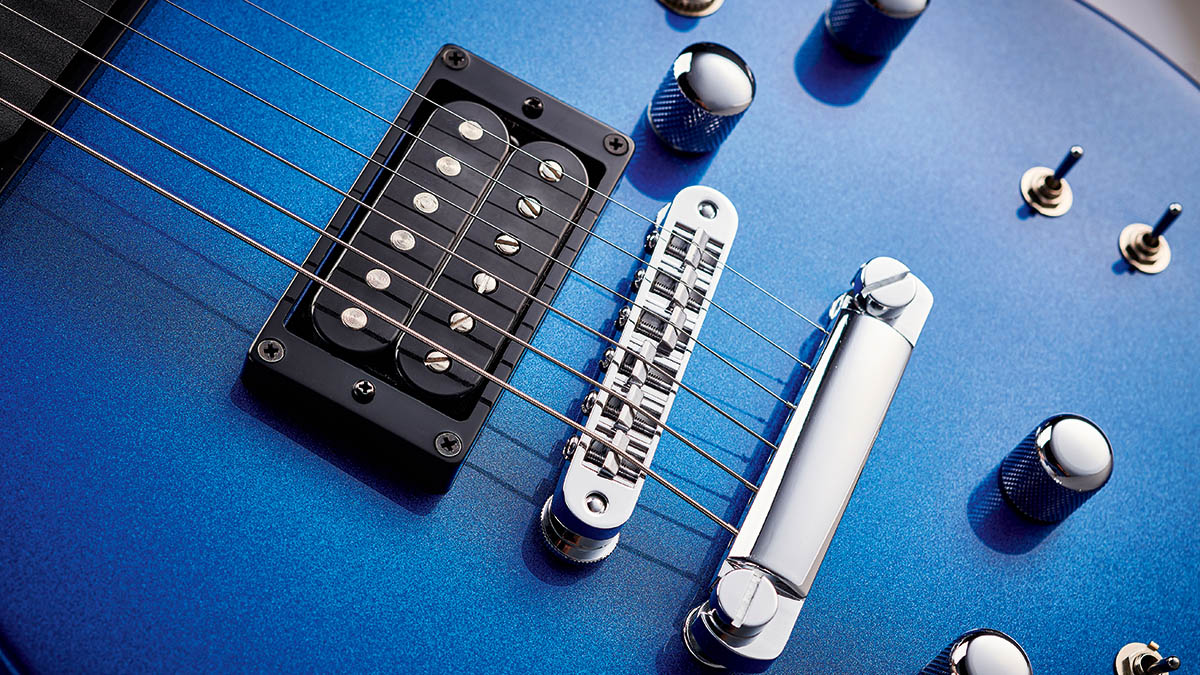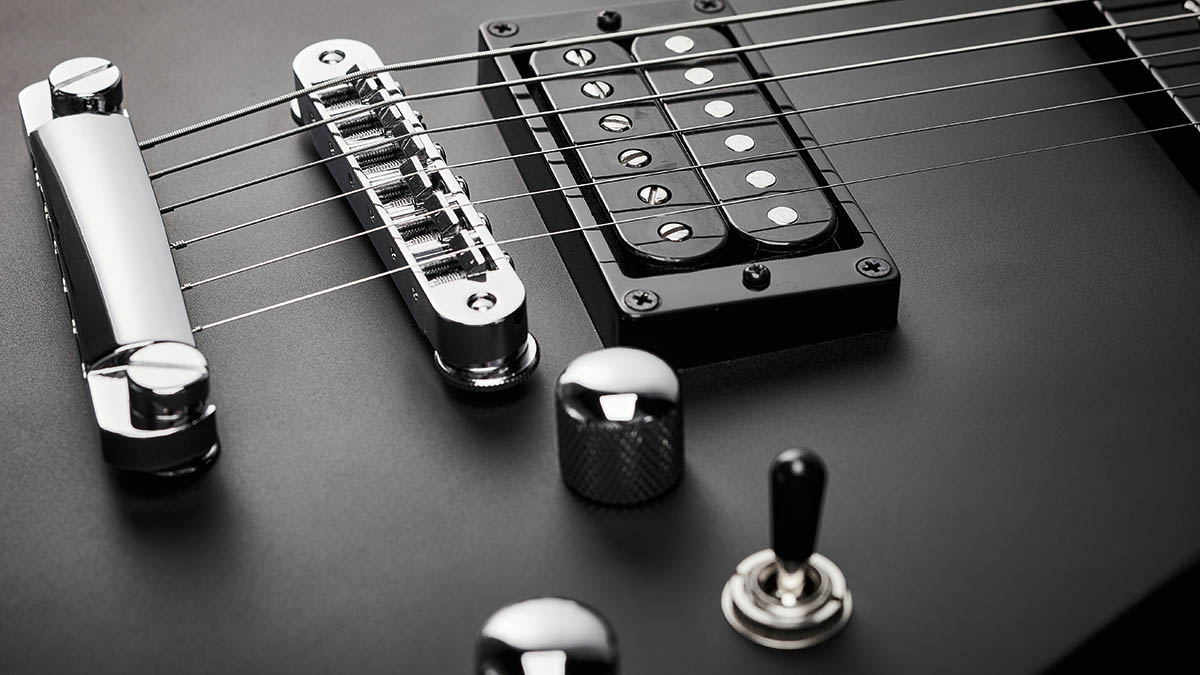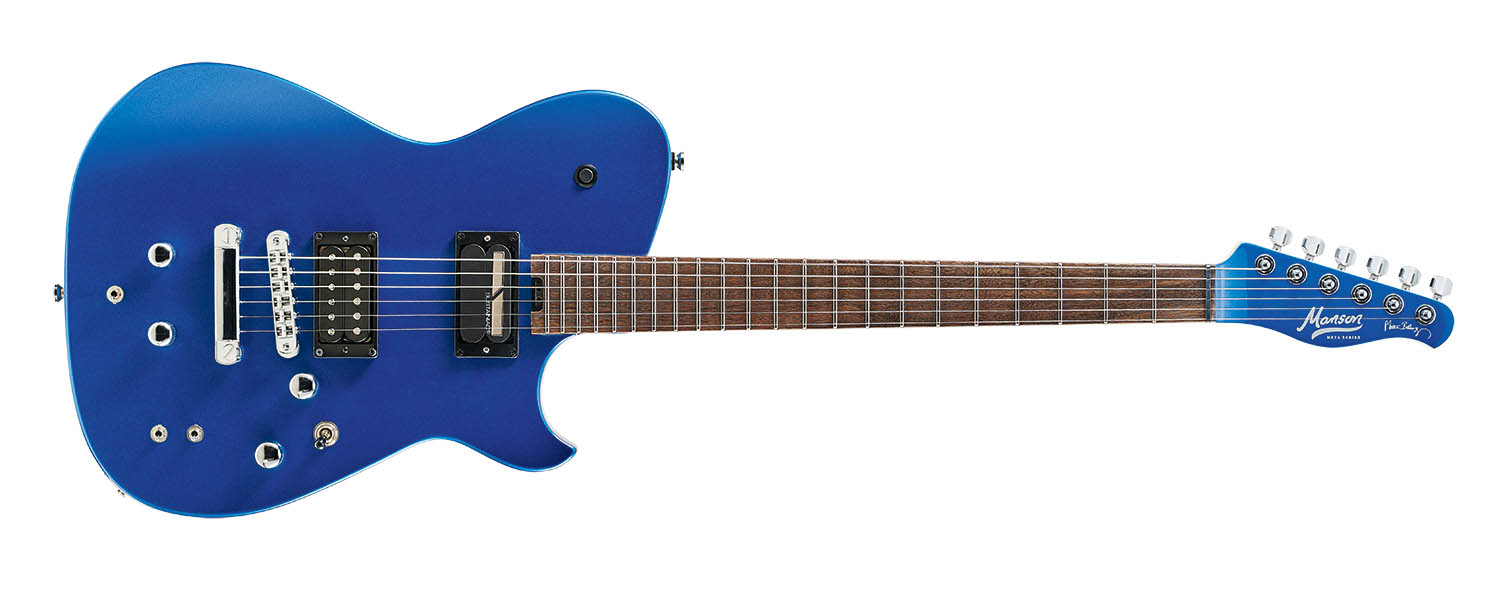Guitar World Verdict
The P-90 MBM-2 makes the MBM platform more versatile still while the MBM-2SF offers something off-the-charts crazy, with onboard Sustainiac and Z.Vex Fuzz Factory circuitry something unheard of on a production line guitar at this price.
Pros
- +
Two top-quality electrics that expand the MBM appeal.
- +
Super-playable.
- +
Solid value.
- +
The MBM-2SF has onboard Fuzz Factory and Sustaniac.
Cons
- -
How do you choose between them?
You can trust Guitar World
“The Meta series don’t always have all the electronics built-in, but I’m hoping that if our collaboration with Cort goes deeper, we might be able to get some guitars with some of the more special effects stuff built-in.” That’s what Matt Bellamy told us when we spoke to him back in 2020. Two years on, and the Muse frontman-turned-guitar-brand-director has clearly settled into his role off-stage.
Manson Guitar Works enlisted the help of Cort Guitars to carry out the build of its first affordable design, the MBC-1 in 2015. Next came the Meta MBM-1, and now we arrive at the latest updates in the Matt Bellamy signature guitar range, the Meta MBM-2. There are four models on offer: the neck P-90 loaded MBM-2, humbucker/Sustainiac-equipped MBM-2S, the Z.Vex Fuzz Factory-loaded MBM-2F, and the top-level MBM-2SF with a Sustainiac and a Fuzz Factory built in!
Lefties are catered for too, with the MBM-2LH taking on the MBM-2 revisions, but with the same dual-humbucker configuration as the MBC-1, and at no additional cost to the ‘standard’, MBM-2. It’s a range of options that we haven’t seen at this price, in an easily accessible format from Manson Guitar Works before.
Our review models are the P-90-equipped MBM-2, plus the fully loaded MBM-2SF with a Sustainiac and Z.Vex Fuzz Factory circuit built in.
Now, the design is pretty much common to both models. It starts with that unique MB body shape, which has undergone some subtle body contouring changes in order to bring it closer to Bellamy’s stage guitars, and that last point is something we’ll be seeing throughout the MBM-2’s spec sheet. It’s cut out of basswood, and finished in either Dry Satin Black or Starlight Silver for the P-90-equipped version, or Dry Satin Black/Meta Blue for the tech-heavy model.

The necks on each guitar follow the same format with Canadian maple, carved to a ‘soft V’ profile and fitted with an Indian laurel fingerboard. Guitars don’t come much more contemporary than this, and sticking to that theme there’s a 25.5” scale length (enough to dip your toe into drop-tuned waters), with 22 frets, and the fingerboard features a compound 12”-16” radius.
That means that it’s narrower at the headstock end to make chords more comfortable, while up at the top you should be able to bend without choking-out your notes.
The hardware is uniform, too, with a Cort T-o-M-style bridge and stoptail, plus Manson-branded locking tuners not only keeping things stable, but making string changes quick too. Electronically, both guitars feature a kill button as standard, and the controls are simple master tone/master volume knobs. So, is the difference purely electronic?

In a word, yes. But what difference? We’ll get to that shortly, but first, we should add that the playing experience on both of our review guitars is not only comfortable, but a lot of fun.
The V-shape of the neck is indeed ‘soft’, and while there’s a very slight hump towards its centre, this certainly isn’t the pronounced ridge you’ll find on more vintage examples. It’s a great alternative in a sea of ‘C’s, made even better by the fact that it’s a satin finish, which to us adds a premium feel to what is (in the case of the P-90 model) a relatively affordable guitar.
The fingerboards on both are very neat, with nothing to slow us down and the highly-polished frets make fretting and bending silky smooth. Talking of which, if you’ve ever dismissed a compound radius as marketing fluff, these guitars could well change your mind. A combination of that neck profile and the radius means that we’re able to reach for the sky and hold it there with no sign of our note faltering. Under gain it’s a case of ‘go and have a bite’ – there’s a lot of sustain on offer.
But the big news here is of course the electronics. We’ll start with that neck P-90. Sometimes the humble soapbar gets overlooked as your grandad’s favourite magnet, when it really should be viewed as the guitarist’s secret weapon.
This isn’t an off-the-peg recreation of a dusty blues pickup, though. Manson’s Adrian Ashton tells us that in order to get the balance correct between the P-90 and the existing Manson-designed humbucker, they went back to the drawing board. It shows, because it’s got power and punch in abundance.
Forget what you might think about wooly, vintage warmth, and imagine a neck single coil that’s been on the Red Bull. It’s angry, fired up, and ready to throw tonal punches that you might not see coming. It’s the sort of deep neck tone we associate with players such as Tom Morello – one of Matt’s influences – and it also comes through in his own playing, particularly when he’s in drop-D.

There’s bass without flab, a mid-scoop without losing the growl, and a high-end that helps it slice through. It’s complemented rather than entirely contrasted by that bridge humbucker, which takes us back to a thicker, almost wider-sounding midrange when we want a smoother humbucker sound.
In our review of the MBM-1, we mentioned how we’d like to have seen coil-splitting as a factory option, but in hindsight, we’ll take this pickup configuration – which could easily see you through everything from a set of blues to heavy rock – with pleasure.
On to the sci-fi version, then. There’s the standard controls, but the neck pickup is a Sustainiac Stealth Pro. If you’re not sure what that is, you’re in for a treat. When switched off, the Sustainiac acts like a regular neck humbucker. But, engage the ‘on’ switch, and it will create a magnetic field to excite the strings. This means you can get an infinite sustain from one note, then violin it, slide it, bend it, douse it in effects – whatever takes your fancy.

But there’s more! Because the second toggle switch offers three modes: Fundamental (your original note frequency), Harmonic (which can be used for producing feedback-like sounds), and Mix (a blend of the two). There are internal trim pots inside the guitar for adjusting the humbucker volume, as well as Sustainer gain and Harmonic mode gain, too.
Adding to the fun is the Z.Vex Fuzz Factory circuit. We should point out that Manson hasn’t gone with an inferior or cut-down version of the additional electronics. These are the exact same effects and circuitry that Bellamy uses in his custom stage guitars. The Fuzz Factory is a modern classic, known for its excessive, ripping-Velcro fuzz sound and utilised by Bellamy most famously on the Plug In Baby riff (among many others).
Top-mounted to the guitar are the FF’s Stab and Comp controls, and the effect is engaged via another mini-toggle, which works in the opposite direction to that of the Sustainiac’s on/off switch.
Meanwhile there are additional controls inside the guitar’s cavity, which are again ‘set and forget’. Engaged, it’s nothing short of insanity, in the best possible way! Winding up the gate gets you that tight, ripping, Jack White-style fuzz, all stuttering and synth-like.
Play with the comp control, and you’ll hear a huge self-oscillation that sits somewhere between noise and feedback, and can be bent in pitch as you move through the knob’s travel. Bellamy fans will have seen and heard this particular effect many times in live performances.
Final Verdict
We weren’t sure how different these guitars would be from their – let’s face it – already extremely good predecessors. In a nutshell, we’d say that to the regular player, the P-90 MBM-2 represents a jump forward in versatility, with that neck pickup really adding an additional dimension that’s preferable to a coil split, while still maintaining a thicker sound so you don’t miss the humbucker.
The Sustainiac/Fuzz Factory MBM-2SF is a different beast. While the additional electronics make this guitar unique to an extent, it’s based on Bellamy’s own combo of experimentation, and therefore we think it’ll be one for Muse fans to really sink their teeth into. The Meta Blue finish looks fantastic, and both models prove once again what can be achieved and offered in an electric guitar in 2022 for surprisingly low prices.
We started with a quote, so we’ll end on one, “We keep trying to find ways to make [guitars with effects] more cost-effective...” Says Bellamy. “We’re trying to find ways to make that more widely accessible so that we can make guitars like that for everybody.” We think they’ve managed it in spades.
Specs
- PRICE: £569 / $599 approx (MBM-2 P-90), £1,349 / $1,499 approx (MBM-2SF)
- BODY: Basswood
- NECK: Canadian hard maple
- SCALE: 25.5”
- FINGERBOARD: Indian laurel
- FRETS: 22
- CONTROLS: Volume, tone, 3-way switch, kill button (all models). Sustainiac on/off, mode toggle, Z. Vex Fuzz Factory on/off, gate and comp controls (MBM-2SF only)
- HARDWARE: Cort T-o-M-style bridge and tailpiece, Cort locking tuners
- LEFT-HANDED: Yes (dual humbuckers only)
- FINISH: MBM-2 P-90 – Dry Satin Black, Starlight Silver; MBM-2SF – Dry Satin Black, Meta Blue
- CONTACT: Manson Guitar Works

Stuart has been working for guitar publications since 2008, beginning his career as Reviews Editor for Total Guitar before becoming Editor for six years. During this time, he and the team brought the magazine into the modern age with digital editions, a Youtube channel and the Apple chart-bothering Total Guitar Podcast. Stuart has also served as a freelance writer for Guitar World, Guitarist and MusicRadar reviewing hundreds of products spanning everything from acoustic guitars to valve amps, modelers and plugins. When not spouting his opinions on the best new gear, Stuart has been reminded on many occasions that the 'never meet your heroes' rule is entirely wrong, clocking-up interviews with the likes of Eddie Van Halen, Foo Fighters, Green Day and many, many more. If he's not playing the guitar, you'll likely find Stuart behind the kit playing Valerie to newlyweds.
“It holds its own purely as a playable guitar. It’s really cool for the traveling musician – you can bring it on a flight and it fits beneath the seat”: Why Steve Stevens put his name to a foldable guitar
“Finely tuned instruments with effortless playability and one of the best vibratos there is”: PRS Standard 24 Satin and S2 Standard 24 Satin review











